#nicoya peninsula
Text
Pura Vida in Costa Rica
Colorful Costa Rica
If nature opened an amusement park I know exactly where it would be. Just before the North American continent tapers down to the narrow isthmus that is Panama, lies the jewel of Central America: Costa Rica. Translated, pura vida means: Pure life, which aside from being the national motto, aptly describes the philosophy of this tropical country that is nearly the size of the…
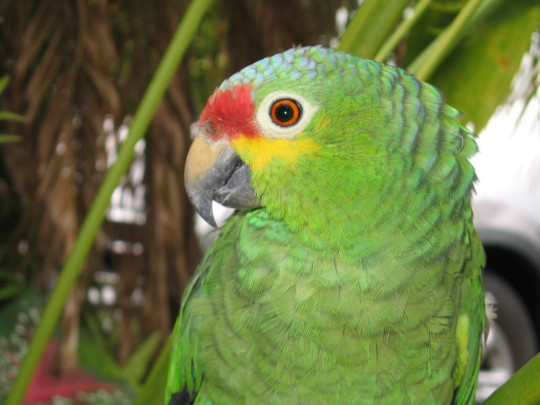
View On WordPress
#Arenal Volcano#Carara National Park#Costa Rica#Guanacaste#La Fortuna#Montezuma#Nicoya Peninsula#Pura Vida#rafting Rio Toro#rappelling#Tabacon Hot Springs#Tarcoles#Travel Tips
0 notes
Text
Turtles Nesting in Costa Rica: A Grim Adventure
As vultures circled menacingly overhead, I viewed the half-chewed carcass of a large turtle rotting in the hot, Costa Rican sun. Our tour guide pointed to the eggs still visible in the gaping body cavity, and hypothesized that a shark had bitten into the turtle before it had a chance to nest. At that point, I realized that the day’s outing to see the Olive Ridley turtles had taken an unexpectedly…
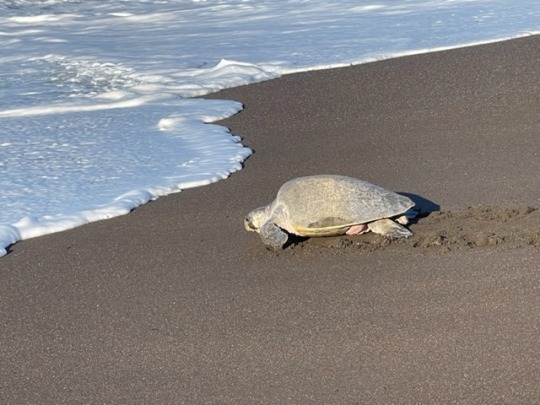
View On WordPress
0 notes
Text
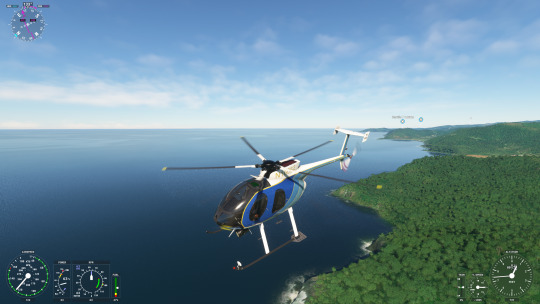

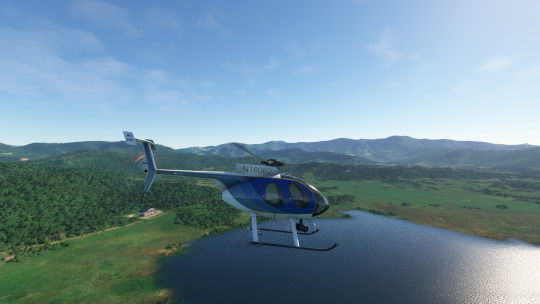
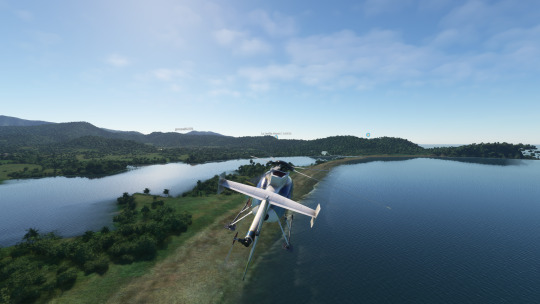
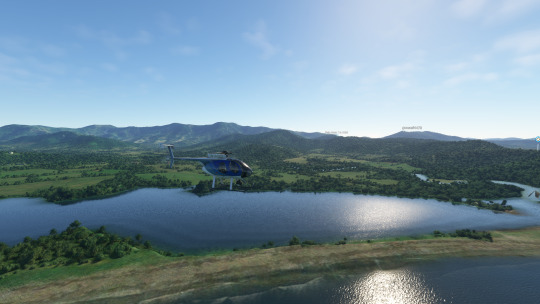



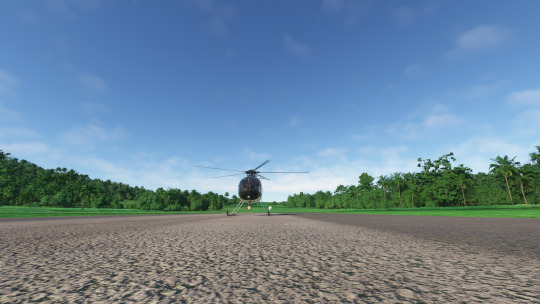
MSFS2020 MD500, Guanacaste Costa Rica, early flight Nicoya Peninsula
0 notes
Text


Nicoya peninsula, Costa Rica (January 2024)
31 notes
·
View notes
Text

Red-tailed Pacific Lizard (Gymnophthalmus speciosus) family Gymnophthalmidae, Nicoya Peninsula, Costa Rica.
photograph by Jean F. Montero
140 notes
·
View notes
Text

I have been fascinated with @danbuettner ‘s work & study on the Blue Zones, also known as areas of the world of where the healthiest and longest living people (centenarians) reside. These people are the definition of longevity, so it’s worth studying their characteristics.
Where are the 5 Blue Zones?
🇺🇸Loma Linda, California (U.S.A.)
🇨🇷Nicoya Peninsula, Costa Rica
🇮🇹Sardinia, Italy
🇬🇷Ikaria, Greece
🇯🇵Okinawa, Japan
Blue Zone characteristics:
• 90% - 100% of their diet consists of whole, plant-based foods high in fiber!
Fruits, vegetables, tubers, nuts, beans (daily), whole grains
NOTE: they retreat from dairy but will reach for goat & sheep milk products.
• Cruciferous veggies – broccoli, cabbage, cauliflower
• Cook & finish dishes with olive oil
• Supplement w/ fresh herbs & spices (w/ medicinal & healing properties) – rosemary, oregano, sage, mint, garlic, turmeric, mugwort
• Snack on nuts – almonds, pistachios, Brazil nuts, cashews, walnuts
• Whole grains – sourdough, 100% whole wheat, rye, barley
NOTE: sourdough is naturally lower in gluten, has gut-supportive bacteria, & high in fiber.
• Their diet is naturally low in sugar. (No more than 7 tsp/day).
• Drink mostly water & green tea. They also drink some coffee (antioxidants) & red wine (polyphenols) in moderation.
Other factors:
o Fast occasionally
o They move naturally every 20 minutes or so.
o Regular connections
o Little time on electronics
o Sense of purpose
"If you want to live to a healthy 100, you have to eat & live like healthy people who've lived to 100." -Dan Buettner
#longevity#Health#healthy food#healthyeating#heart health#healthy#healthy habits#healthy heart#healthy lifestyle#healthy foods#healthy eating#healthy living#healthylifestyle#healthyliving#anticancer#antiinflammatory#nutrition#blue zones#Disease#diseasefighting
10 notes
·
View notes
Text
Overview
The fundamental concern as we look to reform health in America is the known reality that most chronic diseases that afflict Americans are predominantly lifestyle induced; and the belief is that the vast majority of heart attacks and strokes could be prevented if people were willing to adopt healthy lifestyle behaviors. In addition, healthy lifestyles would impact a significant number of cancers which are also believed to be related to lifestyle exposures, especially to obesity, cigarettes, and other toxins.
Over the past 50 years, the health of Americans has gotten worse, and now 71% of Americans are overweight or obese—not 66%, which was reported 5 years ago.1 That means a staggering 100 million people in America are obese. Today, eating processed foods and fast foods may kill more people prematurely than cigarette smoking.2
Authorities determined the 71% figure by classifying people with a body mass index (BMI) over 25 kg/m2 as overweight or obese. Yet in long-lived societies such as in the “Blue Zones” (Ikaria, Greece; Sardinia, Italy; Okinawa, Japan; the Nicoya Peninsula of Costa Rica; and Loma, Linda California) and wherever we find groups of centenarians, we observe a healthy BMI below 23 kg/m2, not 25 kg/m2. If we use above 23 kg/m2 as the demarcation for overweight or obesity, then we find that 88% of Americans are overweight. And out of the approximately 10% that are of normal weight, the majority of those so-called “normal weight individuals” are either cigarette smokers, or suffer from alcoholism, drug addiction or dependency, autoimmune disease, occult cancers, inflammatory disorders, autoimmune conditions, digestive disorders, irritable bowel syndrome, and other illnesses that lower their body weight. Therefore, perhaps that only about 5% of the American population is at a normal weight as a result of eating healthy and living a healthy life. A recent study documented that only 2.7% of Americans adopt a relatively healthy lifestyle by combining exercise with healthy eating.3 The Standard American Diet (SAD) is clearly not a healthy diet.
I use the term “Fast Food Genocide” because most don’t understand the depth and breadth of the harm as a large segment of our society eats a diet worse than the dangerous SAD. Many people recognize that junk food, fast food, processed food, white flour, sugar, maple syrup, honey, agave nectar, and all the junk people are eating contribute to in obesity, diabetes, heart attacks, strokes, dementia and cancer, but many don’t realize the strong causative role an unhealthy diet may have in mental illness. Currently, 1 in 5 Americans suffers from a psychiatric disorder. And many people don’t realize the harm that processed foods have on Americans living in urban areas where they don’t have easy access to whole, fresh foods.
These unfortunate folks live in what we call “food deserts,” with reduced availability to fresh fruits and vegetables. Because of the limited access to supermarkets, they eat more unhealthy fast and processed foods and end up having 7 times the risk of early-life stroke (before age 45), putting people in nursing homes in their 30s, 40s, and 50s.4-7
The vulnerable poor in these areas also have double the risk of heart attack, double the risk of diabetes, and 4 times the risk of renal failure8-10; Unfortunately, the decrease in life span due to food inequality is shocking but rarely discussed. A substantial proportion of people in these urban environments are overweight, prediabetic, or fully diabetic. Researchers determined that compared with other areas in America with easy access to supermarket food, that the YPLL (Years of Potential Life Lost) for an overweight diabetic living in a zone classified as a food desert was a shocking 45 years!11,12
A link may even exist between fast food, processed food, commercial baked goods, and sweets and destruction of brain cell and a lowering of intelligence. Candy and sweetened baked goods may even stimulate the brain in an addictive fashion, which can lead to more serious illnesses.
The nutritional fundamentals accepted by the World Health Organization and most nutritional authorities today include vegetables, beans, nuts, seeds, and fruit as healthy foods; and salt, saturated fat, and excess sugar as disease causing. Excessive amounts of animal products may lead to premature aging, increased risk of chronic disease and higher all-cause mortality. Multiple studies have been published on hundreds of thousands of people, followed for decades showing that the objective endpoint of death is increased with higher amounts of animal product consumption.13-17 Furthermore, refined carbohydrates may not just lead to being overweight and diabetic but also contribute to dementia, mental illness, and cancer.18-21 There is considerable evidence today that heart disease is not only promoted by saturated fat and increased animal products but also by refined carbohydrates, including white rice, white bread, sugar, honey, maple syrup, and agave nectar.22-25
Research has shown that excess calories shorten lifespan, whereas moderate caloric restriction slows the aging process and protects the body and brain. Americans consume more calories than any other population; and they consume foods, many of which have minimal or no nutritional value (soda and alcohol as examples). So let’s consider the individual who is consuming 50 excess calories per day. What will be the short- and long-term result? Fifty excess calories per day, over and above your basic metabolic needs, over a 10-year period, adds about 50 pounds of extra body weight. The excess weight increases the risk of multiple chronic illnesses, cancers, and also takes many years of life away from the individual simply as a result of consuming only 50 calories a day too many.
Conversely, if an individual consumed 50 calories a day less that their metabolic requirements what would happen then? Would he or she become too thin, anorexic, and unhealthy? Would their bones fall apart? Obviously not! When you moderately caloric-restrict, even a small amount such as 50 to 100 calories a day, weight remains about the same, the person is slim, not too thin, and healthy. He or she will have a lower body fat percentage, and the skeletal mass, bones, and muscle mass are strong. In this scenario, the metabolic rate would slow down accordingly. The respiratory quotient, (the number of calories lost through respiration) would decrease, the body temperature would lower, and thyroid function would decrease slightly, all lowering the metabolic rate, which overall may result in a slowing of the aging process. The secret to a long life and freedom from chronic disease may be simply to moderately reduce calories in order to slow down our metabolic rate. The only behavior proven scientifically to dramatically increase life span in every species of animals, including primates, is to lower caloric intake while maintaining an environment of micronutrient adequacy, assuring that we have exposure to every micronutrient humans need. The American diet is also deficient in antioxidants and phytochemicals that are needed for normal immune function, for maximizing brain health, protecting against dementia, chronic illness, cancer, and premature aging.
to continue reading the rest of the article, click HERE or the header to go to the article directly in full
2 notes
·
View notes
Text

All Day Slimming Tea
The All Day Slimming Tea is a powerful new tea for supporting healthy weight loss & detox, digestion and better sleep.
Instead of a typical weight loss supplement that is full of dangerous ingredients and chemicals...
Our All Day Slimming Tea is a delicious 100% natural tea, based on the traditional tea recipe that has made Nicoya peninsula in Costa Rica one of the healthiest places in the world, where people's lifespan is almost 90.
follow us to be happy
#edthings#fast#collar bones#anamia#ana#ana thoughts#weight lose#lose weight#eating disorders#anorexia#ednos#calories#pro ana#proana tips#lose weight motivation#lose weight tips#lose weight fast#weight loss#losing weight#weight loss success stori#diet to lose weight#diet plan#How to loss weight fast#loss weight#howtogetridofbellyfat#how to loss weight fast#weight lose fast#loss weight fast#healthy diet
5 notes
·
View notes
Text
Trip Planning Tips And Tricks For Costa Rica
Costa Rica is famous as the 'treasure' for journeys in Central America and for the right reason. There are different interesting places to visit in Costa Rica. Costa Rica excursions cowl the slopes of the Arenal Volcano to the seashores of the Nicoya Peninsula in addition to the wetlands of Tortuguero National Park. The most straightforward issue in making plans for a journey to Costa Rica is handling to match all of the matters to do!
Long Trip At The Right Time:
Costa Rica may also appear small on the map. There are many locations to look at and adventures to be had – from its suitable beaches, misty cloud forests, outstanding wildlife, and lush rainforests to lively volcanoes. It is not possible to look at Costa Rica in simply a week.
Most people pick to best tours in Costa Rica at some stage in the dry season (December-April) to revel in the first-class sunny weather. But that includes a price – it's busy and expensive!
Why no longer go to some stage in the wet season (May-November) instead? You will run into rain showers. However, you'll be rewarded with thinner crowds, greener landscapes, cooler temperatures, and less expensive rates! Also, maximum excursions run yr round. Even for whale-looking and turtle nesting excursions!
Traveling To And Around Costa Rica:
International flights are highly clean to locate while planning an experience in Costa Rica. Most will arrive at San José International Airport. However, Liberia also possesses an airport where international flights come and go.
The country is likewise turning into a more famous cruise stop, even though this could restrict a while to an afternoon or two. When planning a more extensive local tour, crossing the country's overland borders is usually straightforward.
Plan a vacation in Costa Rica, and pay a little attention to hiring a car. Doing so offers you the liberty to do what you need while you need it, and street situations are usually good. If you don't drive, commute taxi offerings now hyperlink as much as among the country's pinnacle destinations. At the same time, Costa Rica's long-distance bus community can even get you where you need to be, possibly in less comfort!
Conclusion:
Planning a trip to Costa Rica needs to be done correctly. There are many things one needs to consider, not just simply thinking about top hotels in Costa Rica, and the time and date of the trip are important things to keep in mind.
2 notes
·
View notes
Text
Monday, August 12, 2024
Debby finally moves out of the US, though some flooding risk and power outages remain
(AP) The sun came out but the power stayed off in more than 100,000 homes and businesses across four states Saturday as Debby finally moved out of the U.S. After first arriving in Florida as a hurricane, the storm spent the better part of a week unleashing tornadoes and flooding, damaging homes and taking lives as it moved up the East Coast. Though the skies cleared, a flood warning remained in effect until Saturday night in a small part of northern New York where up to 7 inches (18 centimeters) of rain fell. The National Weather Service said water there was receding slowly, and many roads remained flooded. Nearly 170,000 customers in Ohio, New York, Pennsylvania and Vermont had no electricity Saturday afternoon, according to PowerOutage.us, and some utilities said restoration could take days.
On a small peninsula in Costa Rica, people live longer than anywhere else in Latin America
(NZZ) Oleli Carillo waves to us from afar. He is sat on a rocking chair in front of his house. The shade of a mango tree falls across his veranda. Carillo has been sitting here since the early morning. If someone he knows passes by—and at 90 years old, he knows almost everyone in the village—he raises his hand and has a quick chat. “I am content and happy,” Carillo keeps repeating during our conversation, without being asked. “Gracias a Dios”—thank God, he adds each time and smiles peacefully. For him, this is more than just a phrase. The Nicoya Peninsula in the northwest of Costa Rica is known for its lush green hilly landscapes, picturesque palm beaches and kitschy pink sunsets. There are animals and fruits here that can only be found in this region of the country. It is also a so-called blue zone, a region where people are said to live longer and healthier than average. According to researchers, the chance of living to be over 100 years old on this peninsula is three and a half times higher than the global average. But people like Carillo have not read a single health book in their lives, and don't spend a moment worrying about leading an active lifestyle. They simply live the way their parents and grandparents did. Carillo has spent his entire life in the region. He rarely ventures far, and has never owned a car. When he has had to go somewhere, he has usually gone on foot, or sometimes on horseback. There were no roads here in the past, “only footpaths at most,” he says. He built the house he is sitting in front of himself. “Until recently, I was still doing handiwork almost every day, but now I need a bit more rest,” he says. That doesn't bother him, though. Although the 90-year-old has worked a lot, his life has never been hectic. “We have time here,” he says with a grin.
The U.S. is trying to persuade Venezuela’s strongman to give up power in exchange for amnesty.
(WSJ) The long-shot effort comes as overwhelming evidence emerges that President Nicolás Maduro lost last month’s election. The U.S. made its offer during secret talks last year in Qatar, and one person close to his regime said that, for now, he remains unwilling to discuss arrangements where he would have to leave office. Since 2020, Maduro has lived under a $15 million U.S. bounty for information leading to his arrest on charges of conspiring with his allies to flood America with cocaine.
Olympics Closing Ceremony
(NYT) The 2024 Summer Olympics, a global sports festival that descended upon Paris for 19 days of spirited competition, drew to a close on Sunday night with a grand and theatrical ceremony at the Stade de France in Saint-Denis. The closing ceremony—featuring hundreds of performers and live music from international pop stars—offered one last moment for Paris to bask in the joy of these Olympics, which seemed to stir the spirits of a once skeptical local population. Tom Cruise—in his Ethan Hunt persona—wowed by descending from the top of the stadium to electric guitar “Mission Impossible” riffs. Once his feet were on the ground—and after shaking hands with enthralled athletes—he took the Olympic flag from star gymnast Simone Biles, fixed it to the back of a motorcycle and roared out of the arena. Thus the Olympic flag was passed to the city hosting the next Summer Games, Los Angeles. The next Winter Games will be held in Italy, in Milan and Cortina, in February 2026.
Many dozens of Rohingya, including children, killed in drone attack while fleeing Myanmar, witnesses say
(Reuters) A drone attack on Rohingya fleeing Myanmar killed many dozens of people, including families with children, several witnesses said, describing survivors wandering between piles of bodies to identify dead and injured relatives. Four witnesses, activists and a diplomat described drone attacks on Monday that struck down families waiting to cross the border into neighboring Bangladesh. A heavily pregnant woman and her 2-year-old daughter were among the victims in the attack, the single deadliest known assault on civilians in Rakhine state during recent weeks of fighting between junta troops and rebels.
Seoul says North Korea has flown more trash balloons toward South Korea
(AP) South Korea’s military says North Korea is again flying balloons likely carrying trash toward the South, adding to a bizarre psychological warfare campaign amid growing tensions between the war-divided rivals. South Korea’s Joint Chiefs of Staff said Saturday that the winds could carry the balloons to regions north of the South Korean capital, Seoul. Seoul City Hall and the Gyeonggi provincial government issued text alerts urging citizens to beware of objects dropping from the sky and report to the military or police if they spot any balloons. North Korea in recent weeks has flown more than 2,000 balloons carrying waste paper, cloth scraps and cigarette butts toward the South in what it has described as a retaliation toward South Korean civilian activists flying anti-Pyongyang propaganda leaflets across the border.
China courts developing nations in its push to build a new world order
(Washington Post) When China’s Premier Li Qiang visited Malaysia in June, he did not need to defend China’s growing projections of economic and military might in Southeast Asia. Malaysia’s Prime Minister Anwar Ibrahim did it for him: China was a “true friend” whose dominance should not be feared, said Anwar. The following month, Malaysia applied to join the BRICS grouping of countries, which Beijing has sought to expand into a coalition of developing nations. China’s efforts to provide an alternative to Western hegemony, said Anwar, “brought us a glimmer of hope that there are checks and balances in the world.” Increasingly alienated by developed countries allied with Washington and Brussels, Beijing has pursued a deliberate campaign to court nations in the developing world or what is sometimes called the “global south”—not just by funding infrastructure projects but by providing security assistance and geopolitical backing at international forums. “In a lot of the capitals around the world, they’re now thinking first of Beijing, and then of Washington,” said Oriana Skylar Mastro, a center fellow at Stanford University’s Freeman Spogli Institute for International Studies. Speaking before the Senate Foreign Relations Committee last week, U.S. State Department Deputy Secretary of State Kurt Campbell acknowledged as much: China has outpaced the United States in engaging the global south, he said.
Japan’s PM cancels overseas trip following ‘megaquake’ warning
(The Independent) Japanese prime minister Fumio Kishida has cancelled his high-level diplomatic visit to Central Asia in the wake of the first-ever warnings of a “megaquake” off Japan’s southern coast from scientists. People have also reportedly been advised to avoid panic buying and hoarding daily necessities and disaster supplies amid the warning. Shortly after a 7.1 magnitude earthquake shook Japan’s eastern coast of Kyushu island on Thursday, the Japan Meteorological Agency issued its first-ever “megaquake advisory” and warned of a possible major earthquake from the underwater Nankai Trough. People in the quake-hit areas have been advised to exercise high caution for about a week, according to seismologists at the Japan Meteorological Agency.
Hezbollah is undeterred as Lebanon braces for war with Israel
(Washington Post) An Israeli strike that killed a Hezbollah fighter traveling a rural road here last week left a blasted car, a scorched patch of earth and the tenuous Israeli claim that the attack had dealt a “significant blow” to its enemy across the border. But there seemed to be plenty of young men willing to take the place of the fighter, Ali Abdul Ali, in his hometown in southern Lebanon, less than two miles from the spot where he was killed. They were seen crowding around his flower-decked coffin in footage of his funeral last week, where local grief and anger mingled with the party supporter’s zeal. “Hezbollah,” they chanted. Ten months after entering the conflict between Israel and its ally Hamas, Hezbollah, the Lebanese militant group and political party, appears undeterred after absorbing withering blows from Israeli strikes and the killing of nearly 400 fighters and commanders. Hezbollah has only paused its strikes into northern Israel once, back in November. More recently, it has ratcheted up the intensity of its attacks and broadened its list of targets to include Israeli towns it said it had not previously hit.
Israel orders more Gaza evacuations after school shelter attack kills scores
(Reuters) Israel expanded evacuation orders in Khan Younis in the southern Gaza Strip overnight, forcing tens of thousands of Palestinian residents and displaced families to leave in the dark as explosions from tank shelling reverberated around them. The Israeli military said it was attacking militants from the Hamas group—which administered Gaza before the war—who were using those areas to stage attacks and fire rockets. On Saturday, an Israeli airstrike on a school where displaced Palestinians were sheltering in Gaza City killed at least 90 people, according to the civil defence service, prompting an international outcry. The Israeli military said it had struck a Hamas and Islamic Jihad militant command post, an allegation the two groups rejected as a pretext, and killed 19 militants. In Khan Younis in the south of the Gaza Strip, the evacuation instruction covered districts in the centre, east and west, making it one of the largest such orders in the 10-month-old conflict, two days after tanks returned to the east of the city.
A chess club for kids thrives in a Congo refugee camp. It’s about more than the game
(AP) Children sit on the dirt, their clothes ragged and torn, their shoes punctured with holes, but their eyes bright and fixed on what’s playing out in front of them. In a corner of a refugee camp in conflict-wracked eastern Congo, about a dozen chess games are going, each one with its own fascinated audience. The Soga Chess Club for children doesn’t have enough tables and chairs. The “boards” are squares of paper with green and white blocks marked on them and are lined with plastic to protect them from the wear and tear coming their way. Irritatingly, the pieces sometimes topple over if players haven’t found a flat enough stretch of ground to lay their game out on. But the chess club founders say it’s good enough to try and take these kids’ minds away from what they’ve seen and experienced so far: fighting and killing, hunger and fear. They’ve all lost their homes. Some have lost fathers, mothers or siblings in one of the world’s worst humanitarian crises. Chess is “a therapeutic escape from the stress and horrors these children have endured,” said Gabriel Nzaji, one of the club’s instructors. He said the game encourages the children to be quiet and to focus, a way of calming their minds.
1 note
·
View note
Text
Promises of happier, healthier living drove tourists to Costa Rica in droves. Now, locals say the Blue Zone lifestyle is dying out.
New Post has been published on https://sa7ab.info/2024/08/11/promises-of-happier-healthier-living-drove-tourists-to-costa-rica-in-droves-now-locals-say-the-blue-zone-lifestyle-is-dying-out-2/
Promises of happier, healthier living drove tourists to Costa Rica in droves. Now, locals say the Blue Zone lifestyle is dying out.
Tourism has spiked in Costa Rica, but locals say the flurry of activity has caused the Blue Zone lifestyle they're seeking to fade away.Sergio OrtizTourism has spiked in Costa Rica, with visitors trying to get a taste of the Blue Zone lifestyle.But as tourists flood the area, locals say key elements of the Blue Zone life are fading away.Tourists want more amenities, infrastructure, and foods not found in the area, changing local habits.Tourists are flocking to Costa Rica, with visitors trying to get a taste of the Blue Zone lifestyle that promises better-than-average health and longevity.And while the country's economy has grown to depend on the tourism industry, locals say the surge in outside influence has resulted in key elements of the Blue Zone's customs fading away.Costa Rica's Nicoya Peninsula is one of five "Blue Zones" known for residents who live longer and healthier lives than others around the world. In this sliver of the land in the Central American country, locals' lives have historically centered on strong community ties, purposeful and physical daily work, and a healthy diet of fresh produce and lean proteins.Longevity researchers attribute these lifestyle habits to residents' lasting wellness. Business Insider previously reported that the average lifespan in the area is 85 years old."One of the reasons we came here was because there was so little here, and we really enjoyed the real Costa Rica — the jungle and everything being very local, things like that," Thomas Jones, who has lived in the coastal town of Paquera, at the tip of the Nicoya Peninsula, for nearly 20 years, told Business Insider. "Of course, it's never going to stay like that as things progress and there's more people coming into the area, more developments coming up around here."Once the habits of the Nicoya Peninsula became the subject of researchers' focus, health-conscious tourists quickly followed — and being adjacent to a Blue Zone became a selling point around the country.Tourism in Costa Rica directly accounted for 4.8% of the country's total GDP in 2019, according to the Tourism Satellite Account. American tourists make up the biggest market, followed by Europeans from countries including Germany, Spain, and France.As tourists flock to the country, they demand more amenities, infrastructure, and foods not found in the area, locals told Business Insider. To accommodate the guests, the country is changing — adding more fast food options, more luxury hotels, and paving new roads — which in turn is changing local habits.Jones, who runs a tourism company that relies on foreign guests to stay afloat, said it can be challenging to strike a balance between making enough money to live well — and pay his 12 employees — and maintaining the original, rugged charm that drew him and his wife to the country from Norway in 2007.Juan Gabriel, a guide for Jones' company Bahia Rica, told BI he grew up on a small island with no electricity and has seen firsthand how Blue Zone tourism has changed his life and that of his family."The people, a long time ago, they had to live different; they had horses, they had to get up at 4 in the morning to take care of the cows, and then in the afternoon they'd finish their day, but they didn't have a lazy life," Gabriel said. "Now, if you can buy it from the supermarket, why not?"Gabriel said he's grateful for his upbringing, which he said taught him to be resilient and adaptable — but he won't be raising his kids the same way, even though he knows it may be healthier for them.Blue Zone tourism has become a double-edged sword since locals have grown to rely on tourists for jobs and new development in the region. The industry provides much-needed financial stability, but with that stability comes the sacrifice of traditions that made Costa Rica a longevity hot spot in the first place.Improved infrastructure means less of a daily grind due to the paved roads and easier access to transportation services, so there's less need to walk — but it also means that the daily physical labor that researchers think leads to a longer life is minimized. The addition of fast food to the Blue Zone area also means there's less of an emphasis on the diet that prioritizes small portions, low sugar, and lean proteins.Researchers from Stanford have studied the Nicoya Blue Zone. In a 2023 article in Stanford Medicine Magazine, David Rehkopf, an associate professor of epidemiology and population health and of medicine at the Stanford School of Medicine, specifically noted the changes in transportation and the addition of Western foods as reasons the Blue Zone benefits are at risk."These people are losing the advantage seen by previous generations," said Luis Rosero-Bixby, a Costa Rican demographer, who did research with Rehkopf. "It's not uncommon to see people in Nicoya live to be in their 90s, but we're seeing that number slip back down into the 80s."Still, if you're in the region, you will probably see a lot about the Blue Zone as a selling point driving more tourism."A lot of people are using it for their business — Blue Zone this, Blue Zone that — I'm sure they know what it means, but the lifestyle is something that's fading, unfortunately, because it was all the old-timers keeping it alive," Jones told BI. "I think in about 10 years, there's gonna be no more Blue Zone here because the old ones are going to die off, and the young ones don't live the same lifestyle."
0 notes
Text
Your Premier Jeep and 4x4 Rental Service
Renting a Jeep Costa Rica from 4BOX4 Costa Rica allows you to access remote areas that are often inaccessible by standard vehicles. Imagine driving through the dense forests of Monteverde, navigating the rugged trails of Arenal Volcano, or cruising along the scenic Nicoya Peninsula.
0 notes
Text
Top 10 Must-Do Activities in Costa Rica

Costa Rica is a paradise for nature lovers, adventure seekers, and beach enthusiasts. This Central American gem is known for its stunning landscapes, rich biodiversity, and a plethora of activities that cater to all types of travelers. Whether you're visiting for the lush rainforests, the beautiful beaches, or the vibrant culture, Costa Rica has something to offer everyone. Here are the top 10 things to do in Costa Rica when visiting this incredible country.
1. Explore Arenal Volcano and Hot Springs
One of Costa Rica's most iconic landmarks is the Arenal Volcano. Located in the northern part of the country, this active volcano offers breathtaking views and numerous hiking trails. After a day of exploration, relax in the nearby hot springs. These natural geothermal waters provide a perfect way to unwind while enjoying the surrounding lush jungle.
2. Visit Manuel Antonio National Park
Manuel Antonio National Park, located on the Pacific coast, is renowned for its stunning beaches, rich wildlife, and scenic hiking trails. This small yet diverse park is home to monkeys, sloths, and a variety of bird species. The park's trails lead to beautiful viewpoints and secluded beaches, making it a must-visit for nature enthusiasts.
3. Experience Monteverde Cloud Forest
Monteverde Cloud Forest is a mystical and enchanting place where clouds hover over the treetops. This unique ecosystem is home to a wide array of flora and fauna, including the resplendent quetzal, a rare and colorful bird. Visitors can explore the forest through guided tours, hanging bridges, and zip-lining adventures.
4. Relax on the Beaches of Guanacaste
The province of Guanacaste, located in the northwestern part of Costa Rica, boasts some of the country's most beautiful beaches. Playa Conchal, Playa Flamingo, and Tamarindo are popular destinations for sunbathing, swimming, and water sports. The region's dry tropical climate ensures plenty of sunny days, making it ideal for beach lovers.
5. Discover the Wildlife in Tortuguero National Park
Tortuguero National Park, situated on the Caribbean coast, is often referred to as the "Amazon of Costa Rica." This remote and pristine park is accessible only by boat or plane and is famous for its extensive network of canals, rivers, and lagoons. It's a vital nesting ground for green sea turtles, and visitors can witness these magnificent creatures during the nesting season.
6. Go White-Water Rafting on the Pacuare River
For adventure seekers, white-water rafting on the Pacuare River is an exhilarating experience. The river offers some of the best rapids in Central America, surrounded by lush rainforests and waterfalls. The Pacuare River is suitable for both beginners and experienced rafters, providing an adrenaline-pumping adventure in a stunning natural setting.
7. Explore Corcovado National Park
Corcovado National Park, located on the Osa Peninsula, is one of the most biologically intense places on Earth. This remote park is home to a diverse range of wildlife, including jaguars, tapirs, and scarlet macaws. Hiking through the park's dense rainforest offers an unforgettable experience for those seeking to connect with nature.
8. Soak in the Culture of San José
Costa Rica's capital city, San José, is a vibrant hub of culture, history, and art. The city is home to numerous museums, including the National Museum of Costa Rica and the Pre-Columbian Gold Museum. Visitors can also explore the bustling Central Market, which offers a variety of local goods and traditional cuisine.
9. Enjoy Surfing in Santa Teresa
Santa Teresa, a small beach town on the Nicoya Peninsula, has gained a reputation as a surfing paradise. With consistent waves and a laid-back atmosphere, it's a favorite spot for surfers of all levels. In addition to surfing, Santa Teresa offers yoga retreats, beachfront dining, and a relaxed bohemian vibe.
10. Take a Wildlife Safari on the Tempisque River
The Tempisque River, located in the Guanacaste region, offers a unique opportunity to experience Costa Rica's wildlife up close. Boat tours along the river provide sightings of crocodiles, monkeys, and a variety of bird species. The river flows through Palo Verde National Park, a vital wetland habitat that attracts numerous migratory birds. For more travel tips and information on the top ten things to do in Costa Rica, visit BookTrip4u. Start planning your unforgettable Costa Rican adventure now!
Conclusion
Costa Rica is a destination that captivates the hearts of travelers with its natural beauty, diverse wildlife, and adventure opportunities. Whether you're exploring the rainforests, relaxing on the beaches, or immersing yourself in the local culture, there's no shortage of incredible experiences to be had. Plan your trip to Costa Rica today and discover why it's one of the most beloved travel destinations in the world.
0 notes
Text



Nicoya Peninsula, Costa Rica (January 2024)
25 notes
·
View notes
Text

Yellow-headed Gecko (Gonatodes albogularis), male, family Sphaerodactylidae, Nicoya Peninsula, Costa Rica
photograph by Jean F. Montero
44 notes
·
View notes
Text
Unveiling the Blue Zones: Discovering the Secrets to Longevity
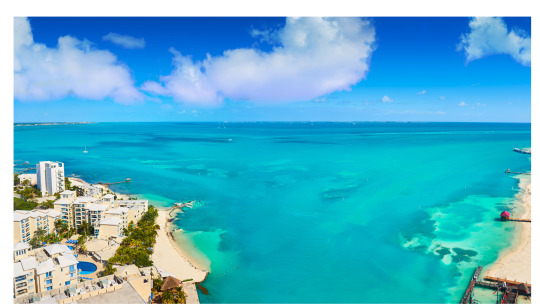
Have you ever wondered why certain communities around the world seem to defy the aging process and live exceptionally long, healthy lives? Join me as we explore the Blue Zones—regions where people experience remarkable longevity—and uncover the lifestyle and dietary factors that contribute to their exceptional health and vitality.
What are the Blue Zones?
The concept of Blue Zones was coined by National Geographic explorer Dan Buettner to describe regions with the highest concentrations of centenarians (individuals living to 100 and beyond). These regions include areas such as Okinawa (Japan), Sardinia (Italy), Ikaria (Greece), Nicoya Peninsula (Costa Rica), and Loma Linda (California, USA). What sets these communities apart? Let's dive into their lifestyle and dietary habits to unravel the secrets of longevity.
The Blue Zones Lifestyle: Keys to Longevity
Plant-Based Diet: Blue Zones inhabitants consume predominantly plant-based diets rich in vegetables, fruits, legumes, whole grains, and nuts. These foods are packed with nutrients, antioxidants, and fiber, supporting overall health and disease prevention.
Moderate Caloric Intake: Blue Zones residents practice mindful eating and avoid overeating. They prioritize quality over quantity, savoring meals with gratitude and moderation.
Physical Activity: Daily movement is woven into the fabric of life in Blue Zones. Whether it's gardening, walking, or engaging in traditional activities, regular physical activity promotes cardiovascular health, strength, and mobility.
Sense of Purpose: Blue Zones inhabitants cultivate strong social connections and a sense of purpose in life. They prioritize family, community, and meaningful relationships, which contribute to emotional well-being and longevity.
Stress Reduction: Managing stress is crucial in Blue Zones. Practices like meditation, relaxation, and spending time in nature help mitigate stress and promote resilience.
The Power of Community and Connection
One of the most significant factors contributing to longevity in Blue Zones is the emphasis on community and social connections. Regular social interactions, strong family bonds, and a sense of belonging contribute to emotional well-being and support overall health.
Bringing Blue Zones Wisdom into Our Lives
While we may not live in a designated Blue Zone, we can embrace the principles of longevity that these communities embody. By adopting a plant-rich diet, engaging in regular physical activity, nurturing social connections, and finding purpose in our lives, we can enhance our health and well-being.
Let's draw inspiration from the Blue Zones and embark on a journey towards greater health, vitality, and longevity. Together, we can incorporate these timeless principles into our lives and cultivate a future filled with health and happiness.
With longevity in mind,
Kimberli Almonla
Owner & CEO of Restoration Wellness
#health and wellness#nutrition#naturopathy#restoration wellness#healthy lifestyle#wellness#plantbased#blue zones#longevity#long life#natural medicine
0 notes